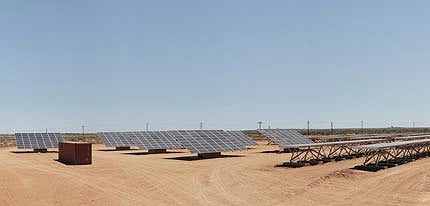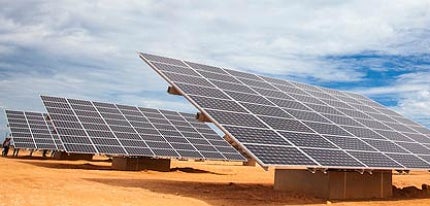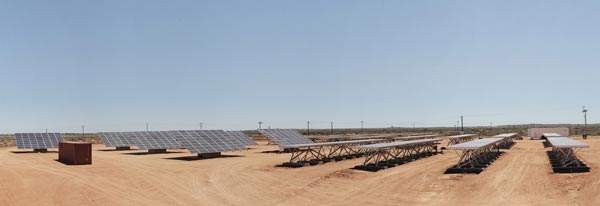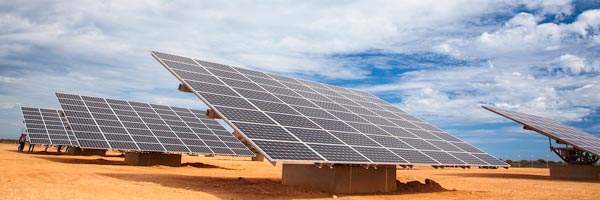
Energy Made Clean (EMC) officially inaugurated its Carnarvon Solar Power Station in May 2012. The 290kW plant is located in Carnarvon, Western Australia. It is the biggest solar installation in the region and also the largest solar plant owned by a private company. EMC invested $2.9m on the plant’s construction.
The new plant will generate 600,000kWh annually to power 120 homes. It will help in saving 180,000l of diesel and displace about 483t of carbon dioxide emissions annually.
Electricity generated by the plant will be sold to Carnarvon utility Horizon Power under a 15-year purchase agreement.
The Carnarvon plant is the first of several solar power stations totalling 50MW which EMC is planning to develop across Western Australia. EMC’s next project is to build a two megawatt plant in Moora in Western Australia.
Purpose of WA’s project, to reduce reliance on non-renewable sources
Western Australia is heavily dependent on diesel-fired power plants burning nearly 580 million litres of diesel every year. About 85% of this power is used by the mining sector in the region. Existing resources are unable to bridge the gap between supply and demand, which causes sudden power fluctuations.
Related news
BP seeks funding for Australian solar project
BP has estimated that its new solar energy project in New South Wales will cost more than US$600m and is seeking funding from the Australian Government.
In addition, supplying electricity to remote areas of the region is proving to be challenging due to the scarcity of fuel and high cost involved in transporting fuel. The government of Western Australia, therefore, has been promoting renewable energy projects, especially solar power plants. This will help the region to reduce its reliance on non-renewable sources and also cut down carbon dioxide emissions.
EMC’s Carnarvon plant is one such project implemented to address the region’s electricity demand. The plant is one of the cheapest solar installations in Australia generating electricity at $10/watt. It was built to serve as a model for other regional towns in Australia.
Financial backing from the Australian Government
The Australian Government provided $1.5m for the project through its Renewable Remote Power Generation Programme. The programme, now closed, was launched by the Office of Energy Western Australia.
Details of EMC’s Carnarvon solar power station and Mecasolar trackers

Single axis trackers can increase power output by 28% compared to fixed solar installations.
The Carnarvon solar plant includes seven single axis solar trackers and 48 seasonally adjusted fixed frame solar trackers supplied by Mecasolar. Single axis trackers can increase power output by 28% compared to fixed solar installations. The PV support structures of the plant are modular and scalable for installation of any type of project. The solar installation is strong enough to withstand category D cyclones.
Related project
Roosevelt Island Tidal Energy Project, New York
Roosevelt Island Tidal Energy (RITE) project is being developed in the East Channel of New York’s East River, in the US.
Construction of the plant started in April 2011. The solar trackers were installed in phases. The first phase included the installation of 180 frames for 16 solar trackers arranged in six 250m long rows.
The plant was completed in December 2011 and commenced electricity generation in February 2012. EMC is working on developing a technology which can provide storage capacity on the site.
This will help in reducing fluctuations and also enable for a much larger installation. APZ provided consultancy services for installation and foundation works of the project.
Potential for Australia’s renewable energy / power market
The distribution network in Carnarvon is an isolated gas / diesel generation grid. With increase in development of solar projects, the grid network faced problems due to variations in system load.
These challenges, such as voltage fluctuations and PV system fires, have now been overcome and Carnarvon has stepped towards large-scale implementation of solar projects.
The geography of Australia also makes it ideally suited for solar projects. In addition, the cost of PV modules has been decreasing, favouring the development of solar projects. This situation has attracted interest from several companies to develop solar projects in the region.
To further encourage solar energy uptake, Horizon has introduced Solar Feed-in Tariffs for different areas within Carnarvon. This system is not available elsewhere in Australia.
Related content
Shepherds Flat Wind Farm, Oregon, United States of America
Shepherds Flat wind farm is being developed near the Columbia River Gorge in the state of Oregon, US.
Cornwall Ontario River Energy Project, Canada
The Cornwall Ontario River Energy (CORE) project is being developed in the St. Lawrence River in Ontario, Canada.






